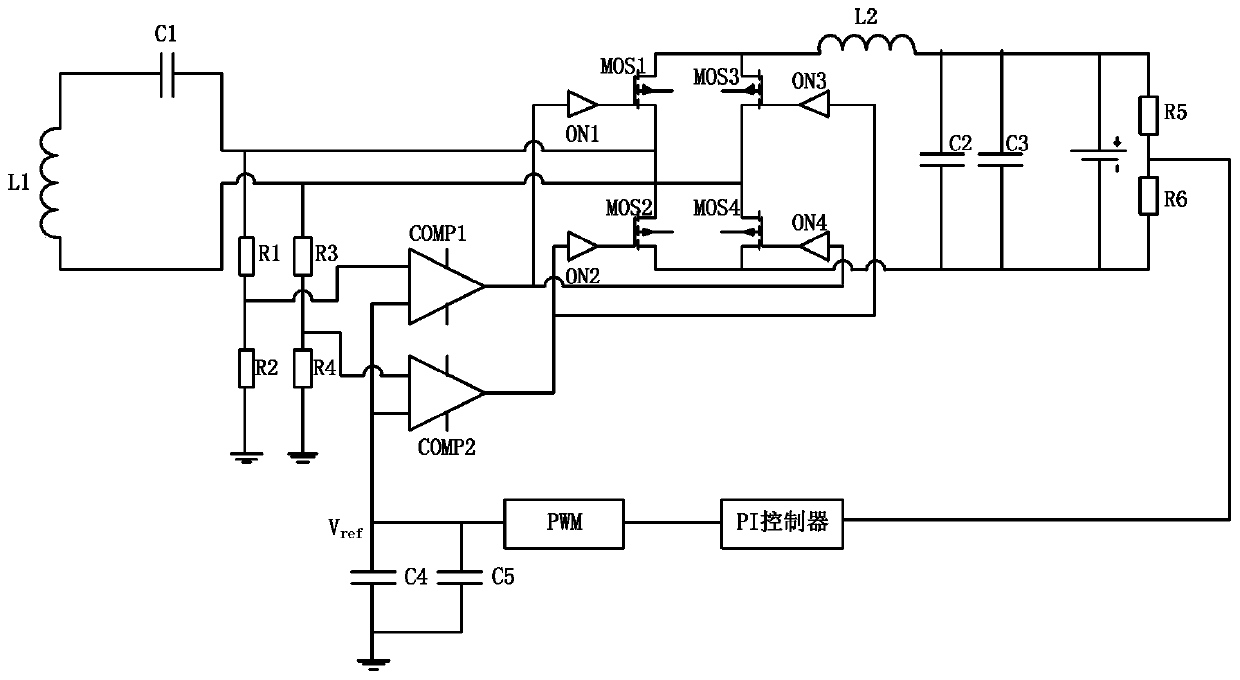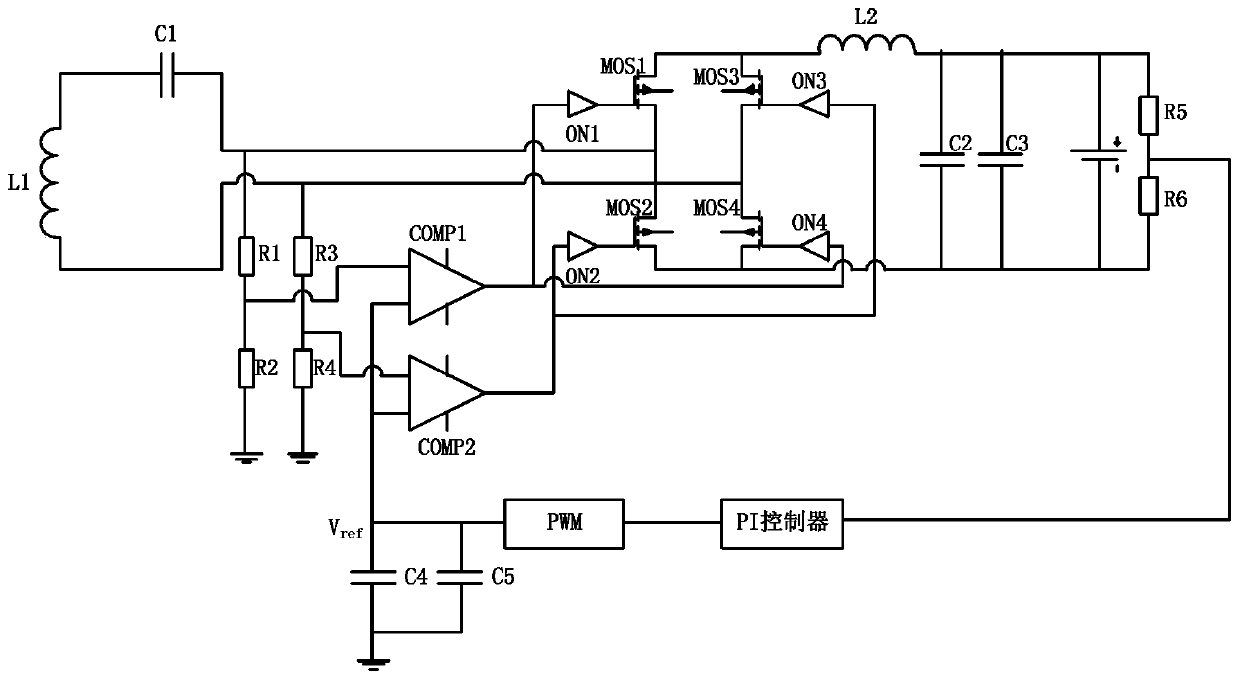A method for regulating the output voltage of a rectifier for wireless power transmission
A technology for wireless power transmission and output voltage, which is applied in the direction of converting AC power input to DC power output, output power conversion devices, high-efficiency power electronic conversion, etc. Efficiency and other issues, to achieve high practicability, reduce rectifier losses, and reduce the number of devices
- Summary
- Abstract
- Description
- Claims
- Application Information
AI Technical Summary
Problems solved by technology
Method used
Image
Examples
Embodiment 1
[0028] A method for adjusting the output voltage of a rectifier for wireless power transmission provided by a preferred embodiment of the present invention includes the following steps:
[0029] Step 1: Obtain the voltage V at the middle point of resistors R1 and R2 det1 , Resistor R3 and R4 intermediate point voltage V det2 , the voltage at the middle point of resistors R5 and R6, where V det1 , V det2 are the input voltage sampling values of the two input terminals of the rectifier at the wireless power receiving end, and the voltage at the middle point of the resistors R5 and R6 is the sampling value of the output voltage of the rectifier.
[0030] Such as figure 1 As shown, the front end of the rectifier is connected with a receiving coil L1 and a receiving compensation capacitor C1 connected in series, and the rear end is connected with a load. The rectifier includes a bridge rectifier circuit composed of MOS tube 1, MOS tube 2, MOS tube 3, MOS tube 4 and correspond...
Embodiment 2
[0042] On the basis of Embodiment 1, the back end of the bridge rectifier circuit is also connected with a filtering and voltage stabilizing circuit for stabilizing and filtering the output voltage. The connected inductor L2 and the capacitors C2 and C3 connected in parallel with the load can stabilize and filter the output voltage through the inductor L2, capacitors C2 and C3. The circuit is simple, the design is reasonable, and the practicability is high.
PUM
 Login to View More
Login to View More Abstract
Description
Claims
Application Information
 Login to View More
Login to View More - R&D
- Intellectual Property
- Life Sciences
- Materials
- Tech Scout
- Unparalleled Data Quality
- Higher Quality Content
- 60% Fewer Hallucinations
Browse by: Latest US Patents, China's latest patents, Technical Efficacy Thesaurus, Application Domain, Technology Topic, Popular Technical Reports.
© 2025 PatSnap. All rights reserved.Legal|Privacy policy|Modern Slavery Act Transparency Statement|Sitemap|About US| Contact US: help@patsnap.com


